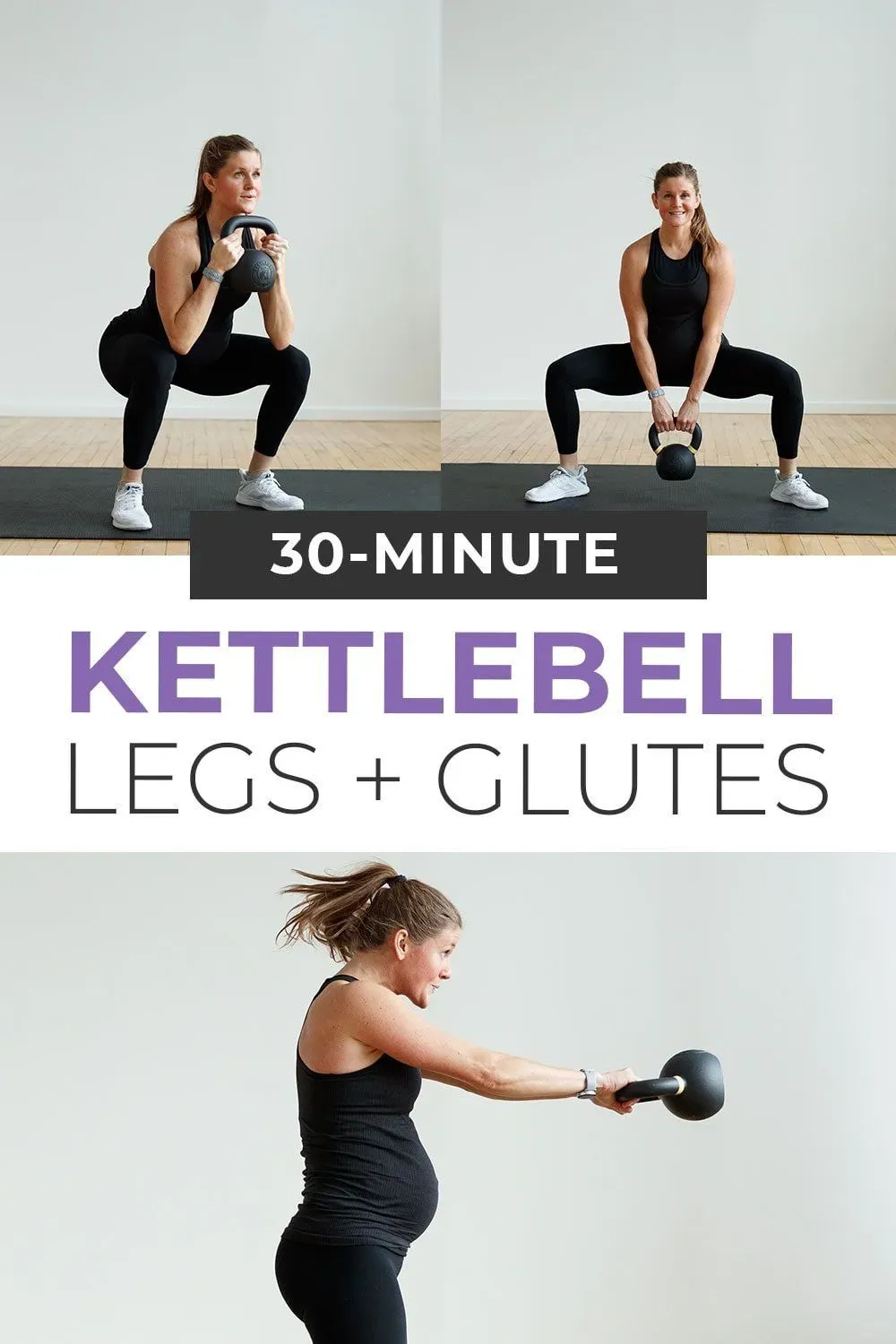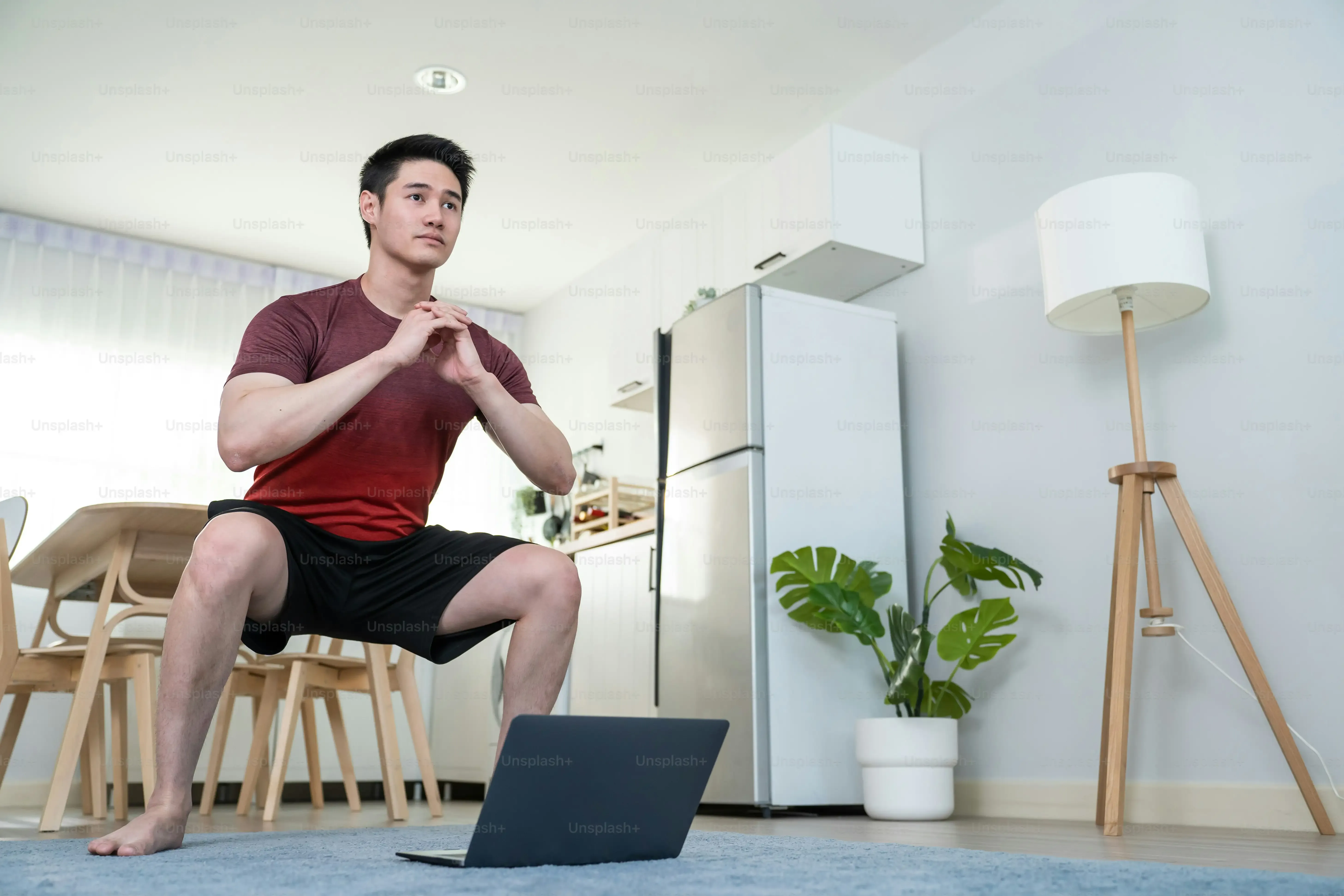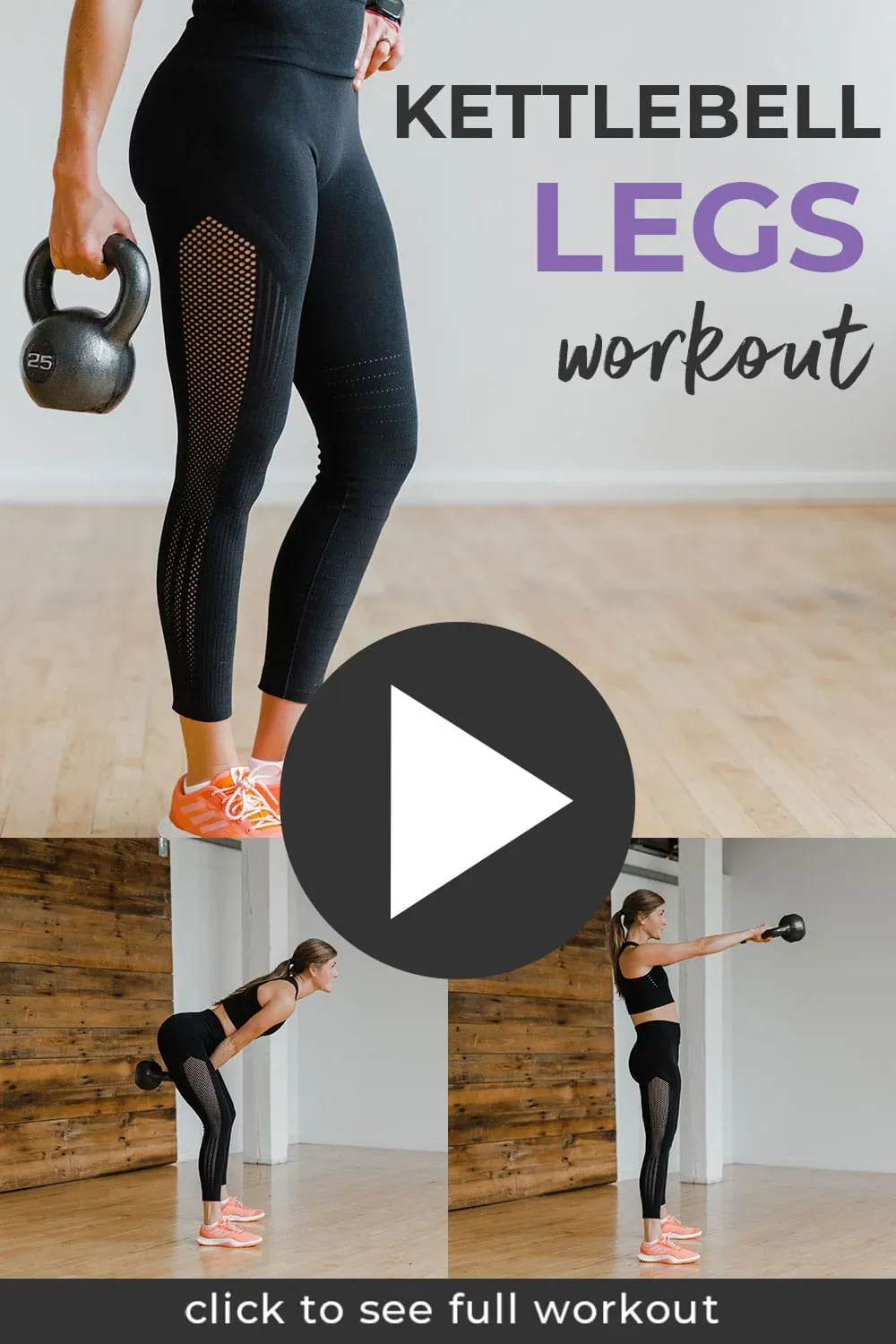Table of Contents
Tired of skipping leg day because you don't have a full gym setup? Or maybe you're just looking for a way to build serious lower body strength and muscle without leaving your living room? You're in the right place. Mastering a home kettlebell leg workout is not just possible; it's one of the most effective ways to sculpt powerful quads, hamstrings, and glutes with minimal equipment. Forget bulky machines and crowded gyms. A single kettlebell unlocks a world of exercises that challenge your legs in unique and dynamic ways, improving not just strength but also balance, coordination, and overall athleticism. We'll walk you through the essential moves, show you how to build a routine that fits your goals and schedule, and discuss how to keep progressing. Get ready to transform your lower body – all from the comfort of your home.
Getting Started: Why a Home Kettlebell Leg Workout is Your Secret Weapon

Getting Started: Why a Home Kettlebell Leg Workout is Your Secret Weapon
Ditch the Gym: Your Home Advantage
Let's face it, getting to the gym for leg day can feel like a major operation. Packing a bag, fighting traffic, waiting for equipment – it all adds up. This is where a home kettlebell leg workout shines. You don't need much space, just a single piece of equipment, maybe two if you get fancy later. Think about the time you save. That commute? Gone. The awkward wait for the squat rack? A distant memory. You can literally roll out of bed, grab your kettlebell, and get a killer leg session in before the coffee's even brewed. It's about removing barriers and making strength training accessible on your terms.
Beyond convenience, training at home with a kettlebell forces you to be more mindful of movement. There are no machines locking you into a fixed path. Every swing, squat, or lunge requires stabilization from your core and smaller supporting muscles, which translates to better overall functional strength. It’s not just about lifting heavy; it’s about moving well under load.
More Than Just Weight: The Kettlebell Difference
A kettlebell isn't just a lopsided dumbbell. Its unique shape and offset center of mass fundamentally change how exercises feel and the muscles they engage. A goblet squat with a kettlebell feels different than with a dumbbell; it pulls you forward, demanding more core engagement and challenging your balance. Swings, a cornerstone of kettlebell training, are ballistic movements that build explosive power in your hips and posterior chain – something traditional barbell or machine exercises often miss.
This versatility means a single kettlebell can replace a rack of dumbbells and several machines for your lower body. You can perform grinding movements for strength and hypertrophy, like squats and lunges, and dynamic exercises for power and conditioning, like swings and cleans. This makes a home kettlebell leg workout incredibly efficient, hitting multiple fitness goals simultaneously with one simple tool.
Here's a quick look at what a kettlebell brings to your leg training:
- Unique weight distribution challenges stability.
- Allows for ballistic, power-focused movements.
- Engages core muscles significantly more than many traditional exercises.
- Requires less space than barbells or machines.
- Highly versatile for strength, hypertrophy, and conditioning.
The Building Blocks: Essential Kettlebell Leg Exercises for Home

The Building Blocks: Essential Kettlebell Leg Exercises for Home
Squat Variations: The Foundation of Your Home Kettlebell Leg Workout
Alright, so you've got your kettlebell. Now what? You start with the basics, the moves that build a solid foundation for any home kettlebell leg workout. The goblet squat is your absolute go-to here. Holding the kettlebell by the horns (the handles) against your chest keeps the weight centered, making it feel really natural and helping you maintain an upright posture. It’s less intimidating than a barbell squat, but still hits your quads, glutes, and even gets your core working hard to keep you stable.
Mastering the goblet squat is non-negotiable. It teaches you how to brace properly, how to drive your knees out, and how to get depth without rounding your back. Once you own the goblet squat, you can progress to racked squats (holding two kettlebells in the front rack position, resting on your forearms) for a heavier challenge, or even single-leg variations down the line. But seriously, spend time making your goblet squat perfect. It pays off big time.
Swings and Deadlifts: Powering Your Posterior Chain
While squats build strength in the front of your legs, you can't forget the back – your hamstrings and glutes. This is where kettlebell swings and deadlifts come in, and they are crucial for a balanced home kettlebell leg workout. The two-handed swing isn't just an arm exercise (please, never make it just an arm exercise); it's a powerful hip hinge movement that works your posterior chain explosively. Think of your hips as the engine driving the bell forward, not your arms lifting it.
Then there are deadlifts. The kettlebell deadlift, especially the single-leg version, is fantastic for building strength, improving balance, and hitting those hamstrings and glutes unilaterally (one side at a time). Holding the bell in one hand during a single-leg deadlift adds an extra layer of core and hip stability work. These movements are less about slow grinding strength and more about building dynamic power and real-world functional strength.
Key exercises for your home kettlebell leg workout:
- Goblet Squat: Fundamental for overall leg strength and form.
- Two-Handed Swing: Builds explosive hip power and works the posterior chain.
- Single-Leg Deadlift: Improves balance and unilateral hamstring/glute strength.
- Racked Squat: A progression for heavier loading on the quads and core.
- Lunges (various types): Hit each leg independently, improving balance and strength.
Crafting Your Killer Home Kettlebell Leg Workout Routine

Crafting Your Killer Home Kettlebell Leg Workout Routine
Putting It All Together: Building Your Session
Alright, so you've got the key moves down – goblet squats, swings, maybe a single-leg deadlift or two. Now comes the fun part, or maybe the slightly overwhelming part:Crafting Your Killer Home Kettlebell Leg Workout Routine. Don't overthink this. Start simple. Think about your goal: are you trying to build muscle, boost endurance, or just get moving? For building muscle, you might focus on fewer reps with a heavier weight on squats and lunges. For endurance or conditioning, you'd lean into circuits with swings and perhaps some squat variations with lighter weight for higher reps. A solid starting point is often combining a squat variation, a hinge movement (like the swing or deadlift), and maybe a lunge. Do a few sets of each. See how you feel. The best routine is the one you'll actually stick to, not some overly complicated plan you found online that requires three different kettlebells you don't own.
Taking it Up a Notch: Advanced Moves for Your Home Kettlebell Leg Workout

Taking it Up a Notch: Advanced Moves for Your Home Kettlebell Leg Workout
Pushing Your Limits with More Complex Moves
you've nailed the goblet squat, your swings are powerful hip hinges, and single-leg deadlifts feel stable. Ready to make that home kettlebell leg workout seriously challenging? This is where you start playing with complexity and intensity. Think pistol squats, even assisted ones holding the bell out front for counterweight, which demand incredible single-leg strength, balance, and mobility. Or maybe double kettlebell work – holding two bells in the front rack position for squats or even lunges amplifies the load and taxes your core even more. Moves like the kettlebell clean aren't just for the upper body; the explosive pull comes directly from your legs and hips, blending strength and power beautifully. These aren't just harder versions of basic moves; they require greater coordination, control, and often, more mobility than you might expect. Progressing means not just adding weight, but mastering more intricate movement patterns.
Staying Consistent: Form, Recovery, and Progress in Your Home Kettlebell Leg Workout

Staying Consistent: Form, Recovery, and Progress in Your Home Kettlebell Leg Workout
Form First, Always
Look, I get it. You see someone swinging a massive bell or squatting like a champ and you want to get there yesterday. But with kettlebells, especially in your home kettlebell leg workout, chasing weight before form is a fast track to feeling like you pulled something important or just practicing bad habits. Your technique is the foundation. Without a solid base, everything you build on top is shaky. Spend time mastering the hip hinge for swings, keeping your chest up and back straight in squats, and controlling the descent in lunges. It feels less glamorous than hoisting a heavy bell, but it's non-negotiable for safety and actual progress. Think of it as building the engine before you floor the gas pedal. Bad form doesn't just risk injury; it means the muscles you *want* to work aren't getting the stimulus they need.
I learned this the hard way trying to rush my swing weight. My lower back let me know exactly how bad my hinge had become. It took weeks to fix. Slow down, video yourself if you can, and really feel the movement. The kettlebell provides immediate feedback – if something feels wrong, it probably is.
Recovery Isn't Optional, It's Essential
You just crushed a tough home kettlebell leg workout. You're sore, maybe a little shaky. That's good! But the work isn't done when the last rep is finished. Your muscles grow and get stronger when you're resting, not when you're lifting. Ignoring recovery is like trying to drive a car on an empty fuel tank. You won't get far. Make sure you're getting enough sleep – that's prime repair time. Fuel your body with decent food and stay hydrated. Pushing through sharp pain is stupid, not tough. Learn the difference between muscle soreness and actual injury pain. If something feels genuinely wrong, take a break. A few days off now is better than being sidelined for weeks or months later.
Here are a few simple recovery tips:
- Prioritize 7-9 hours of sleep per night.
- Drink plenty of water throughout the day.
- Eat balanced meals with protein to help muscle repair.
- Consider light stretching or foam rolling, but don't force it.
- Take rest days – your muscles need them to rebuild.
Tracking and Tweaking for Long-Term Gains
How do you know if your home kettlebell leg workout is actually working? You need to track your progress, but not just the weight on the bell. Note the exercises you did, the sets and reps, how challenging it felt, and importantly, how your form was. Are you able to maintain good posture for more reps? Can you get deeper in your squat? Is your single-leg deadlift more stable? These are all signs of progress. When the current weight feels easy and your form is solid, that's when you consider adding a few reps, doing an extra set, or maybe moving to a slightly heavier bell if you have one. You can also progress by moving to more advanced variations, like switching from goblet squats to racked squats, or from two-handed swings to one-handed swings. Consistency over time, coupled with smart progression and listening to your body, is what truly builds strong, resilient legs at home.
Wrap Up: Your Powerful Home Kettlebell Legs Await
So there you have it. Building strong, functional legs doesn't require a trip to a packed gym or a room full of expensive equipment. With just a kettlebell and the right approach, your home kettlebell leg workout can be incredibly effective for gaining strength, adding muscle, boosting your metabolism, and improving how you move. We've covered the foundational exercises, how to structure your training, and tips for pushing past plateaus. The key now is consistency and paying attention to your body. Start with the basics, focus on quality movement, and gradually increase the challenge. Your lower body strength is a cornerstone of overall fitness, and the kettlebell is your tool. Now go put in the work.